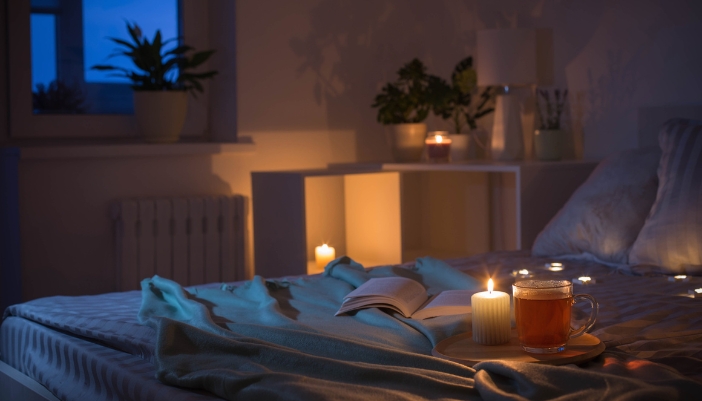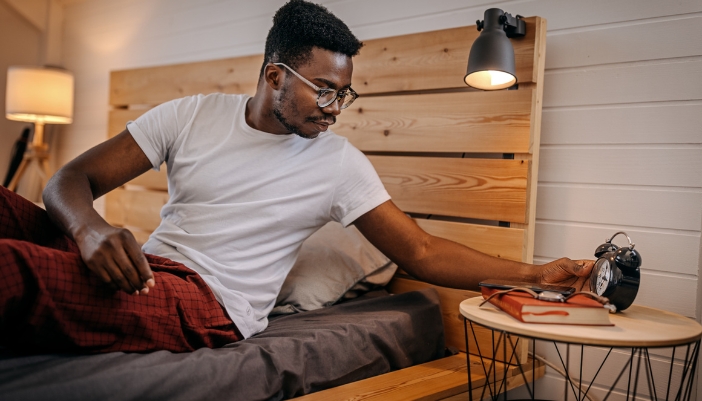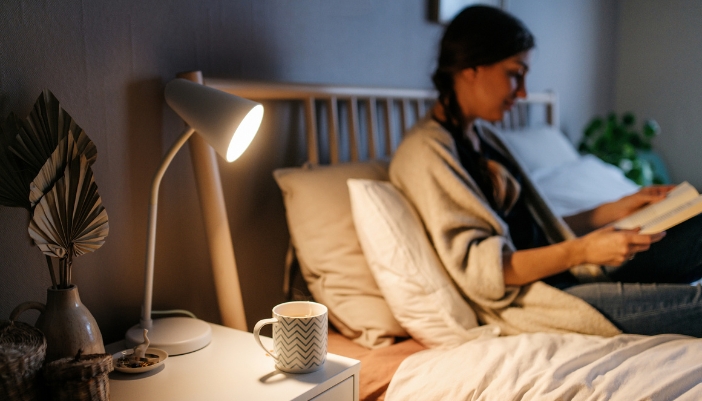As we bid farewell to the old year and usher in the new, it's the perfect time to reflect on one of our most vital yet often overlooked needs – sleep. The quality of our slumber profoundly impacts our daily well-being, influencing everything from our mood to our health. So, for this New Year, why not start refreshed and ready to take things on?
But how do you start? By revamping your sleep environment and changing up some of your habits. And we have the insider secrets to help you get started the right way!
Optimizing Bedroom Layout and Ambiance

Creating a sleep-friendly bedroom is about more than aesthetics; it's about designing a space promoting restful slumber. So, think of revamping your bedroom with these essential considerations in mind!
- Strategic Bed Placement: Position your bed for easy access and a sense of security, and make sure there are two feet of space on both sides for a balanced look and functionality.
- Lighting for Sleep: The right lighting can signal your body when it’s time to sleep, so consider using dimmers or lamps with warm bulbs. And don’t forget about using blackout curtains to keep the bright morning light away.
- Minimize Clutter: A cluttered space can lead to a cluttered mind. Keep your bedroom tidy and free of unnecessary distractions, like keeping most of your electronics outside the room.
- Minimize Noise Disruptions: If noise is an issue, think about a white noise machine or earplugs. Even rearranging furniture or adding a thick rug can help buffer external sounds.
- Air Flow and Quality: Good ventilation is vital. If possible, open a window for fresh air or use an air purifier to keep the sleeping environment fresh and allergen-free.
- Room Temperature: The temperature of your bedroom can significantly affect sleep quality. Most people sleep best in a slightly cool room (around 65°F). Experiment with your thermostat to find the temperature that works best for you.
Establishing a Consistent Sleep Schedule

A good night's sleep starts with a solid routine, so take the opportunity of the new year to start changing up your schedule. By setting your internal clock to wake up and go to bed at the same time every day (yes, including weekends!), you’ll have deeper rest and wake up refreshed! Make sure you don’t just throw yourself into the deep end; try easing into the new rhythm by adjusting your sleep time in small 15-minute increments until you reach your ideal time.
But don’t be tempted to nap for too long! If you must nap, keep them short (around 20 to 30 minutes) and keep them to earlier in the day. And try to avoid caffeine or intense workouts close to your new bedtime!
Creating a Relaxing Bedtime Routine

Now that you're on your way to a consistent sleep schedule let's build a bedtime routine that ushers in restful nights. It starts with dimming the lights and powering down electronics an hour before bed – this simple change signals to your brain that it's time to wind down. Replace screen time with calming activities like reading, listening to mellow music, or doing some gentle yoga stretches (the Cow pose is especially good for sleep!).
Above all, make sure your sleep space is conducive to relaxing with comfy bedding, a nightstand within easy reach, or maybe an adjustable base! With a powerbase, you’ll be able to lift the head of the bed to your preferred reading angle and lay it back down again when it’s time to sleep!
Balancing Technology & Sleep
Let's face it: Most bedrooms often double as mini command centers, buzzing with gadgets and screens. But for sweeter dreams, it's time to rethink this tech invasion. Imagine swapping your late-night social media scroll with an e-reader, dimmed down for sleep-friendly reading. Or, let a sunrise alarm clock nudge you awake gently instead of that startling phone alarm.
And hey, if silence isn't your thing, how about a white noise machine to whisk you off to dreamland? Small changes like these can turn your bedroom from a buzzing hub to a snooze sanctuary. Let's make your tech work for you, not against your Z’s!
The Central Role of a Good Mattress

Now, let's talk about the star of your sleep show – the mattress. It's not just where you sleep; it's the foundation of your nightly rest. A good mattress does more than just feel comfy; it supports your body, keeps your spine aligned, and can even dictate how fresh you feel in the morning.
- Understand Mattress Types: The mattress type can make a difference. Memory foam molds to your body for a personalized fit, innerspring offers traditional, firmer support, and hybrids blend both for a versatile experience. Latex options are there, too, known for durability and natural materials.
- Tailor to Your Sleep Style: Your sleeping position should guide your choice. Side sleepers might lean towards softer mattresses for pressure relief, while back or stomach sleepers could benefit from firmer support for spinal health.
- Consider Special Features: Look for features that suit your lifestyle or health needs. Options like cooling technologies for hot sleepers, motion isolation if you share the bed, or adjustable firmness for adaptable support, could elevate your sleep experience.
- Size and Lifespan Matters: Ensure the mattress fits your space and check the expected lifespan. Investing in a durable, high-quality mattress means better sleep for years to come.
- Try Before You Buy: Many companies offer trial periods. Use this opportunity to feel if the mattress is the right fit for you.
Choosing the Right Bedding and Pillows
Your mattress might be the star, but the right bedding and pillows are essential supporting characters in your sleep story. They greatly affect how comfortable and rested you feel each morning. Here's how to pick the best for you:
- Match Bedding to Your Sleep Needs: Soft, breathable fabrics like cotton or bamboo are great for keeping you cool if you tend to overheat at night. For colder climates or winter months, consider warmer materials like flannel or fleece.
- Pillow Talk: Your sleeping position dictates your pillow needs. Side sleepers generally need thicker, firmer pillows to fill the space between the head and neck, while stomach sleepers might opt for softer, flatter pillows. Back sleepers fall somewhere in between, often benefiting from medium support.
- Allergies and Sensitivities: If you have allergies, look for hypoallergenic options for both pillows and bedding. These can significantly reduce nighttime sniffles and sneezes.
- Refreshing Your Pillows: Don't forget pillows aren't forever. They should be replaced every 1 to 2 years for optimal support and hygiene.
- Layer for Comfort: Layering your bedding with blankets and throws allows you to easily adjust your warmth throughout the night. It's not just cozy; it's practical.
Sweet Dreams Are Made of…

There you have it – your blueprint to transforming your sleep environment for a rejuvenating New Year. But the best way to rejuvenate your sleep is by upgrading your mattress at Stucky's Furniture and Appliance! We have various top brands in several mattress types so you can find the right fit!
Have questions? We have answers! Give us a call or stop by, and our experts will be happy to lend a hand!
